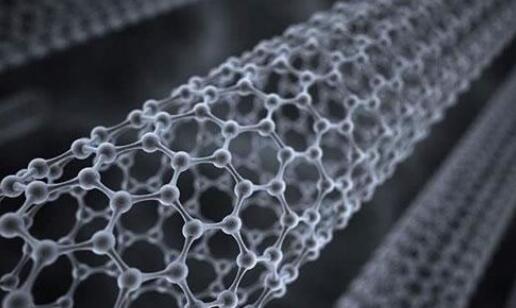What is graphene?
Graphene is a new hexagonal honeycomb lattice material formed by the close packing of single-layer carbon atoms. In other words, it is a two-dimensional carbon material and belongs to the same element heteromorphic body of carbon element. The molecular bond of graphene is only 0.142 nm, and the crystal plane spacing is only 0.335 nm
Many people have no concept of the unit of nano. Nano is a unit of length. One nano is about 10 to the minus 9 square meters. It is much shorter than a bacterium and is as big as four atoms. In any case, we can never see an object of 1 nm with our naked eyes. We must use a microscope. The discovery of nanotechnology has brought new development fields to mankind, and graphene is also a very important representative technology.
Up to now, graphene is the thinnest compound that has been found in the human world. Its thickness is only as thick as one atom. At the same time, it is also the lightest material and the best electrical conductor in the world.
Human and graphene
However, the history of human and graphene has actually lasted for more than half a century. As early as 1948, scientists have found the existence of graphene in nature. However, at that time, it was difficult for the scientific and technological level to peel graphene from the single-layer structure, so these graphenes were stacked together, showing the state of graphite. Every 1 mm of graphite contains about 3 million layers of graphene.
But for a long time, graphene was considered to be non-existent. Some people think it’s just a substance that scientists imagine, because if graphene really exists, why can’t scientists extract it alone?
Until 2004, scientists Andre Geim and Konstantin Volov from the University of Manchester in the UK found a way to separate graphene. They found that if the graphite flakes were stripped from the highly oriented pyrolytic graphite, then the two sides of the graphite flakes were stuck to a special tape, and then the tape was torn off, this method could successfully separate the graphite flakes.
After that, you only need to repeat the above operations continuously to make the graphite sheet in your hand thinner and thinner. Finally, you can get a special sheet composed of only carbon atoms. The material on this sheet is actually graphene. Andre Geim and Konstantin Novoselov also won the Nobel Prize for the discovery of graphene, and those who said graphene didn’t exist were beaten in the face. So why can graphene show such characteristics?
Graphene, the king of materials
Once graphene was discovered, it completely changed the layout of scientific research in the whole world. Because graphene has proved to be the thinnest material in the world, one gram of graphene is enough to cover a standard football field. In addition, graphene also has very good thermal and electrical conductivity.
The pure defect free single-layer graphene has extremely strong thermal conductivity, and its thermal conductivity is as high as 5300w / MK (w / m · degree: assuming that the single-layer thickness of the material is 1m and the temperature difference between the two sides is 1C, this material can conduct the most heat through a surface area of 1m2 in an hour), It is the carbon material with the highest thermal conductivity known to mankind.
Product parameters SUNGRAF BRAND
Appearance color Black powder
Carbon content% > ninety-nine
Chip diameter (D50, um) 6~12
Moisture content% < two
Density g / cm3 0.02~0.08
Post time: May-17-2022

